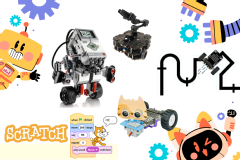Any student who are interested in learning,I teach coding subject with practical experiment, students should have laptop with relevant software .Student should maintain proper time to learn scratch coding
My explanation will follow:
Introduction to Scratch:
Start with an overview of Scratch's user interface.
Explain the concept of blocks and how they snap together.
Basic Concepts:
Cover basic programming concepts like loops, conditionals, and variables.
Use simple examples to illustrate each concept.
Interactive Projects:
Engage students with interactive projects, such as creating animations or simple games.
Encourage creativity and experimentation.
Step-by-Step Guidance:
Break down complex tasks into step-by-step instructions.
Provide clear explanations for each step.
Showcase Projects:
Share examples of impressive Scratch projects to inspire students.
Discuss how these projects were created and the creativity involved.
Problem-Solving Exercises:
Include problem-solving exercises to challenge students.
Encourage them to find solutions independently.
Peer Collaboration:
Foster a collaborative environment where students can share ideas and help each other.
Peer learning enhances understanding and engagement.
Real-World Relevance:
Relate Scratch projects to real-world scenarios to demonstrate the practical applications of coding.
Regular Practice:
Emphasize the importance of regular practice to reinforce learning.
Assign small coding tasks for homework or classwork.
Feedback and Reflection:
Provide constructive feedback on student projects.
Encourage self-reflection to improve problem-solving skills.
Celebrate Achievements:
Celebrate students' accomplishments, no matter how small.
Recognize and reward their efforts to boost motivation.
Resources and Tutorials:
Point students to additional resources and tutorials for self-directed learning.
Encourage exploration beyond the classroom.






